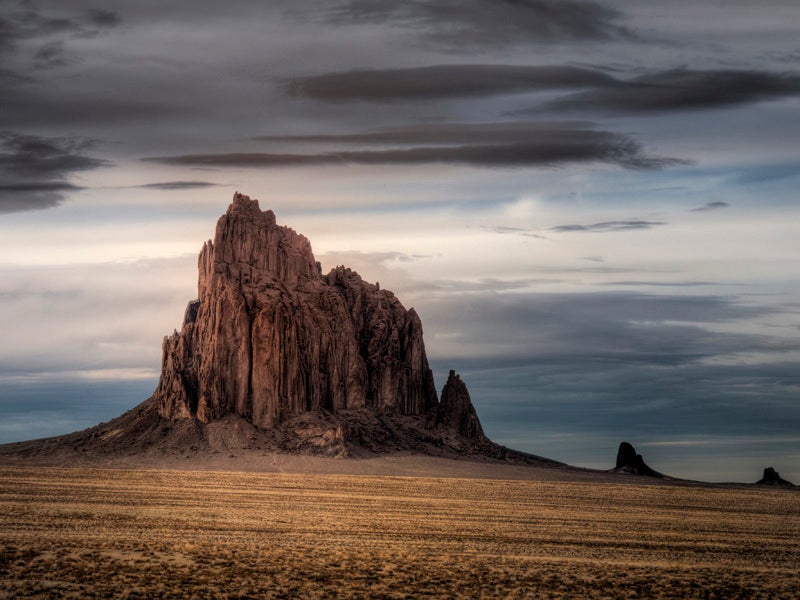Cleaner Air Coming to the Skies Above Four Corners Power Plant
The owners of the Four Corners power plant in New Mexico have reached an agreement to reduce pollution and improve the health of surrounding communities and national parks.

This page was published 10 years ago. Find the latest on Earthjustice’s work.
The Four Corners Power Plant is an energy behemoth that has been operating—and polluting—since 1963. Despite the Interior Department’s announcement that it will approve a 25-year lease extension on the power plant, there is a silver lining to the plant’s hazy plumes that’s not just a mercurial sheen. The owners of the plant have reached an agreement with the National Parks Conservation Association and other clean air advocates to reduce the plant’s pollution and improve the health of surrounding communities and national parks.
The Four Corners plant is located on the Navajo Indian Reservation west of Farmington, New Mexico and is operated by Arizona Public Service Company, Arizona’s largest and longest-operating electric utility. Four Corners generates power by burning coal obtained from the nearby Navajo Mine, which exists for the sole purpose of powering the plant.
The case began in 2011 when several nonprofits enlisted the help of Earthjustice in filing a lawsuit, which asserted that the plant violated the Clean Air Act by increasing emissions without also installing best pollution controls. Under this newly reached agreement, the plant will reduce emissions of nitrogen oxides and sulfur dioxide—major contributors to both respiratory health problems and haze in the parks.
Four Corners is responsible for dirtying the air in Grand Canyon and 15 other national parks in the Southwest. Power plant and factory emissions play a big role in obscuring the views of many beloved landmarks in national parks across the country including Glacier, Big Bend, Sequoia and Yosemite. According to the National Park Service, the average visual range—the farthest a person can see on a given day—in most of the western United States is now about one-half to two-thirds of what it would be without man-made air pollution (about 140 miles). In most of the east, the average visual range is about one-fifth of what it would be under natural conditions (about 90 miles).
The owners of the Four Corners Power Plant will pay $1.5 million in civil penalties and $6.7 million in healthcare and other mitigation costs for the affected communities. The power plant serves as a source of contention among members of the Navajo Nation—its revenues contribute at least $40 million to the tribe’s operating budget, and it employs hundreds of Navajo. However, particulates produced by the plant are also the likely cause of high rates of asthma, pneumonia and bronchitis in the surrounding community.
“This legal victory represents a relentless and inspired fight led by members of the Navajo Nation and concerned local leaders, who refused to give up on the health of their community,” said Earthjustice attorney Mary Whittle, who led this case. “It’s a shame it takes a legal battle to hold the operators of this dirty coal plant accountable, but we’re glad to see action to clean up the air around Four Corners.”
With the extension of the Four Corners Power Plant’s lease, it is unlikely that this ongoing battle between industry, profits and health is over, but this agreement to tackle pollution and invest in the surrounding communities is a step toward a healthier environment in New Mexico.
Established in 2008, Earthjustice’s Northeast Office, located in New York City, is at the forefront of issues at the intersection of energy, environmental health, and social justice.